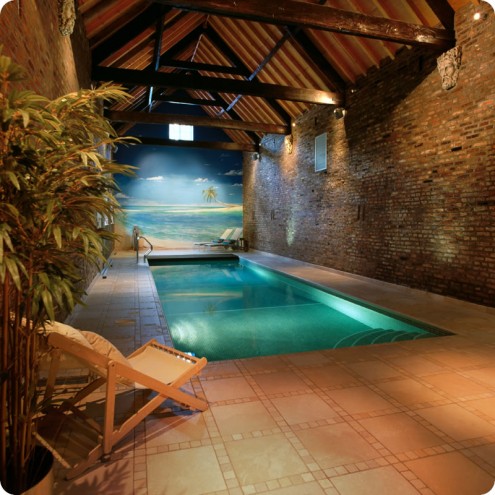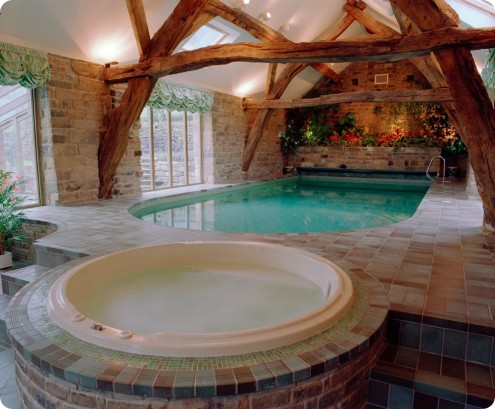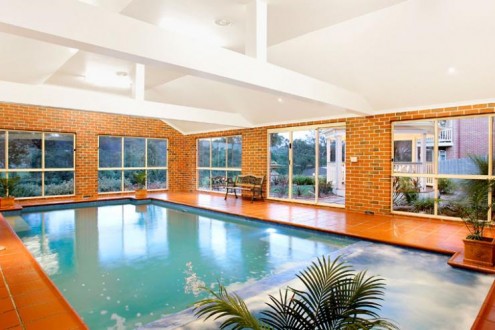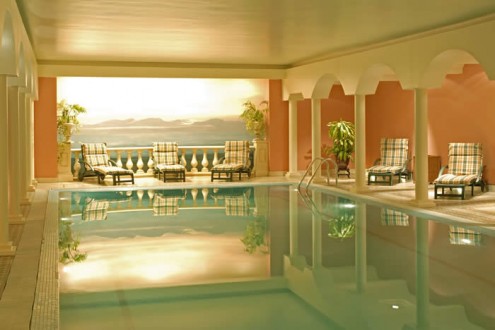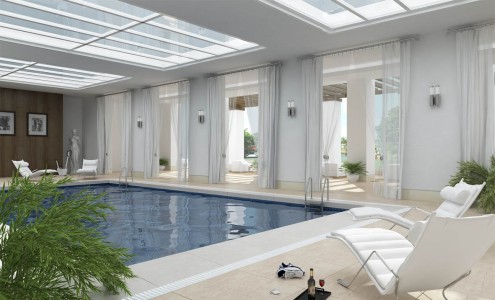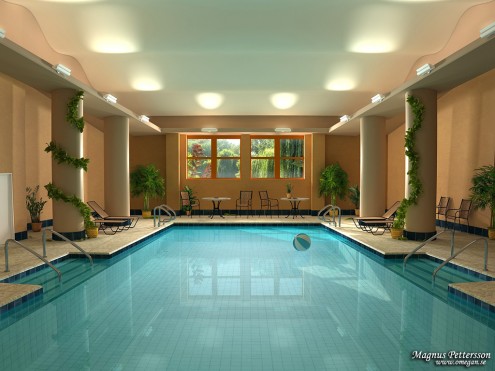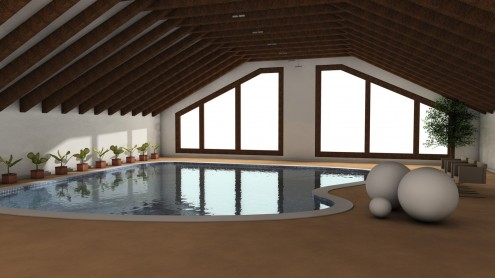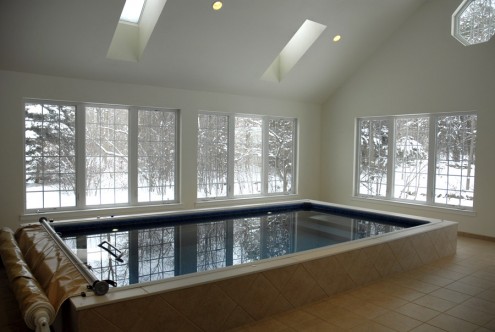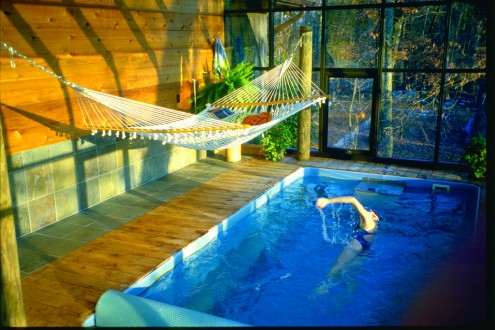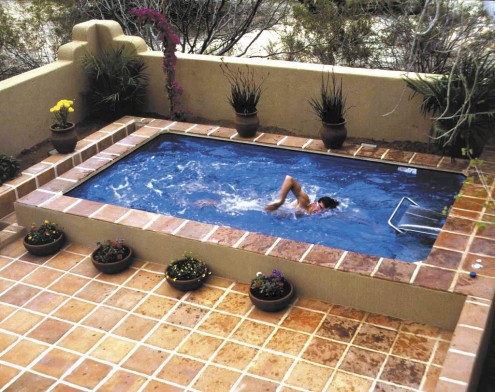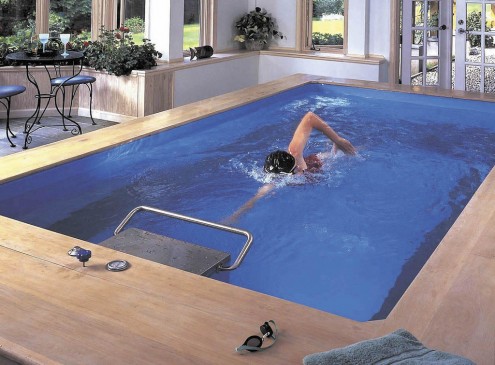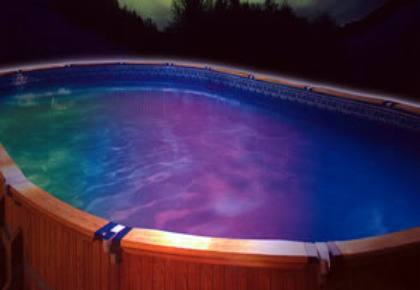Friday, February 24, 2012
Luxury Swimming Pool Images
Offer you a set of images swimming pools and new luxury
I hope that appeal to
I hope that appeal to
Luxury Swimming Pool Images
Luxury Swimming Pool Images
About Pool Spa Outdoor
About Pool & Spa Outdoor
For almost 15 years, Pool & Spa Outdoor magazine was published under the name Pool & Spa Living and served to educate consumers about swimming pools, spas, swim spas, hot tubs, water care, related maintenance products, and other backyard items. In 2011, Pool & Spa Living changed its name to Pool & Spa Outdoor to expand its coverage of backyard products and accessories, including outdoor kitchens & grills, landscape lighting, outdoor furniture, decks, gazebos, water features, fountains, pavers, weatherproof TVs/sound systems, and much more. The recently renamed magazine also includes entertaining recipes, buying tips, expert advice, decorating ideas, and company listings of where to buy.
Pool & Spa Outdoor reaches a wide audience of homeowners who either currently own or are in the market for a pool, hot tub, grill, outdoor kitchen, or any other recreational or design product to spruce up their backyards. Even with its new editorial coverage of outdoor design items, Pool & Spa Outdoor magazine is still true to its roots, and remains the nation’s leading consumer magazine for shoppers and enthusiasts of inground swimming pools, hot tubs and portable spas, swim spas, pool enclosures, cleaners, covers, and water care products.
Pool & Spa Outdoor publishes two issues per year. Its annual Buyers' Guide is on sale in March, and the Experts' issue hits bookstores in June. The magazine can be purchased in popular bookstores nationwide or by ordering through our online bookstore. The magazine features pool builders, hot tub manufacturers, and many other companies across the U.S., including those in California, Florida, Texas, Pennsylvania, New Jersey, and Virginia.
Pool & Spa Outdoor reaches a wide audience of homeowners who either currently own or are in the market for a pool, hot tub, grill, outdoor kitchen, or any other recreational or design product to spruce up their backyards. Even with its new editorial coverage of outdoor design items, Pool & Spa Outdoor magazine is still true to its roots, and remains the nation’s leading consumer magazine for shoppers and enthusiasts of inground swimming pools, hot tubs and portable spas, swim spas, pool enclosures, cleaners, covers, and water care products.
Pool & Spa Outdoor publishes two issues per year. Its annual Buyers' Guide is on sale in March, and the Experts' issue hits bookstores in June. The magazine can be purchased in popular bookstores nationwide or by ordering through our online bookstore. The magazine features pool builders, hot tub manufacturers, and many other companies across the U.S., including those in California, Florida, Texas, Pennsylvania, New Jersey, and Virginia.
Teaching learner pools
Teaching learner pools
This section deals with general principles relating to layout and dimensions of
teaching pools irrespective of whether they belong to a school or form part of a
large swimming pool complex (leisure centre) run by a local authority.
The first principle is that the pool must be absolutely safe for nonswimmers.
The pools are usually rectangular on plan with an almost level
bottom. The water depth generally varies from 0.80 m to 1.00 m. A useful size
is 12.00 m by about 7.0 m.
There are often shallow steps into the pool extending the full length of the
short side.
This section deals with general principles relating to layout and dimensions of
teaching pools irrespective of whether they belong to a school or form part of a
large swimming pool complex (leisure centre) run by a local authority.
The first principle is that the pool must be absolutely safe for nonswimmers.
The pools are usually rectangular on plan with an almost level
bottom. The water depth generally varies from 0.80 m to 1.00 m. A useful size
is 12.00 m by about 7.0 m.
There are often shallow steps into the pool extending the full length of the
short side.
There are different opinions as to whether the walkway around the pool should
be lower than the deck to enable the teacher to carry out his duties without having
to bend down, or whether the pool shell should be elevated similar to the
hydrotherapy pool shown in Figure 1.15 and briefly described in Section 1.9.
In the UK, it is customary for the teaching pool to be quite separate from the
main swimming pool so that the two different types of use do not interfere with
each other. If the teaching pool is in a separate enclosed part of the main building,
it is usual for the temperature of the water and the air in the pool hall to be a few
degrees above that in the main part of the building.
Thursday, February 23, 2012
Covered pools for private houses, hotels
Covered pools for private houses, hotels,
clubs and schools
There are obviously many advantages in having a covered swimming pool instead
of an open-air one. A covered pool can be used in comfort 365 days a year compared
with the ‘season’ for an open-air pool of about 150 days. The conditions under
which the pool has to operate are much less onerous; problems arising from freezethaw
do not arise, staining of the walls and floor is much reduced, and discolouration
of the water from leaves and air-borne dirt will be eliminated.
See for views of private house pools, and for
views of hotel, club, and school pools.
A major problem with covered pools is the occurrence of condensation on the
walls, windows and ceiling, and, depending on the method of construction, within
the roof space.
The environment in the hall of a heated indoor swimming pool can be considered
as particularly hostile to many building materials; the air temperature is relatively
high—probably about 28 °C to 30 °C, and the relative humidity is also high, say,
70–75%. The surfaces in contact with the air in the pool hall will generally have a
lower temperature than the temperature of the air in the hall; if the air is saturated
0=
with water vapour, condensation will occur on the contact surfaces. The temperature
at which condensation occurs is known as the dew point.
The design and detailing of the roof requires special attention
clubs and schools
There are obviously many advantages in having a covered swimming pool instead
of an open-air one. A covered pool can be used in comfort 365 days a year compared
with the ‘season’ for an open-air pool of about 150 days. The conditions under
which the pool has to operate are much less onerous; problems arising from freezethaw
do not arise, staining of the walls and floor is much reduced, and discolouration
of the water from leaves and air-borne dirt will be eliminated.
See for views of private house pools, and for
views of hotel, club, and school pools.
A major problem with covered pools is the occurrence of condensation on the
walls, windows and ceiling, and, depending on the method of construction, within
the roof space.
The environment in the hall of a heated indoor swimming pool can be considered
as particularly hostile to many building materials; the air temperature is relatively
high—probably about 28 °C to 30 °C, and the relative humidity is also high, say,
70–75%. The surfaces in contact with the air in the pool hall will generally have a
lower temperature than the temperature of the air in the hall; if the air is saturated
0=
with water vapour, condensation will occur on the contact surfaces. The temperature
at which condensation occurs is known as the dew point.
The design and detailing of the roof requires special attention
Teaching learner pools
Teaching learner pools
Teaching learner pools
This section deals with general principles relating to layout and dimensions of
teaching pools irrespective of whether they belong to a school or form part of a
large swimming pool complex (leisure centre) run by a local authority.
The first principle is that the pool must be absolutely safe for nonswimmers.
The pools are usually rectangular on plan with an almost level
bottom. The water depth generally varies from 0.80 m to 1.00 m. A useful size
is 12.00 m by about 7.0 m.
There are often shallow steps into the pool extending the full length of the
short side.
There are different opinions as to whether the walkway around the pool should
be lower than the deck to enable the teacher to carry out his duties without having
to bend down, or whether the pool shell should be elevated similar to the
hydrotherapy pool shown in Figure 1.15 and briefly described in Section 1.9.
In the UK, it is customary for the teaching pool to be quite separate from the
main swimming pool so that the two different types of use do not interfere with
each other. If the teaching pool is in a separate enclosed part of the main building,
it is usual for the temperature of the water and the air in the pool hall to be a few
degrees above that in the main part of the building.
This section deals with general principles relating to layout and dimensions of
teaching pools irrespective of whether they belong to a school or form part of a
large swimming pool complex (leisure centre) run by a local authority.
The first principle is that the pool must be absolutely safe for nonswimmers.
The pools are usually rectangular on plan with an almost level
bottom. The water depth generally varies from 0.80 m to 1.00 m. A useful size
is 12.00 m by about 7.0 m.
There are often shallow steps into the pool extending the full length of the
short side.
There are different opinions as to whether the walkway around the pool should
be lower than the deck to enable the teacher to carry out his duties without having
to bend down, or whether the pool shell should be elevated similar to the
hydrotherapy pool shown in Figure 1.15 and briefly described in Section 1.9.
In the UK, it is customary for the teaching pool to be quite separate from the
main swimming pool so that the two different types of use do not interfere with
each other. If the teaching pool is in a separate enclosed part of the main building,
it is usual for the temperature of the water and the air in the pool hall to be a few
degrees above that in the main part of the building.
Wednesday, February 22, 2012
Inground, Above Ground & Fiberglass Pools
inground, Above Ground + Fiberglass Pools
the most common types swimming pool design
Inground Vinyl
the most common types swimming pool design
Inground Vinyl
Traditional in-ground pools usually have reinforced walls with vinyl liners.
Rectangular pools are the most common, but a variety of L-shaped, free form
and other shapes are also available.
Choices are plenty for patterns and colors, as well as other options which
allow owners to add a personal touch to these pools.
Excavation is necessary before installation, so these pools fall into a higher
price range than aboveground pools.
==========================================
Aboveground

Aboveground pools are less permanent than other styles, and most can be drained
and moved to another location if necessary. Sizes range from 8 feet to 28 feet,
with depths up to 7-feet on some models. Raised decks that partially or completely
surround the pool can be added for safety, convenience and aesthetic purposes.
Aboveground pools are the most budget-friendly.
===========================================
Fiberglass
Fiberglass pools have been around since the 1950s. These one-piece, factory-built
shells are made with fiberglass and finished with a gel coating similar to that
used on modern boats.
Fiberglass pools are a popular choice for many owners because installation time is
quicker than some other styles. The pool shell is delivered complete to your home.
After the hole is dug, the shell is lifted into place, leveled and water is added.
These pools are manufactured to withstand temperature changes and maintain the
original surface beauty over time. Weekly chemical and cleaning maintenance is
needed to protect the finish.
==========================================
Inground Gunite
Gunite pools are the most elaborate of the pool categories.
These are permanent, reinforced pools with concrete and plaster
instead of liners. Excavation is necessary, and a variety of
creative options are available to complement these high-quality pools,
including waterfalls, custom steps and beach entries.
The high quality of these pools usually puts them in the highest price range.
sourse
Tuesday, February 21, 2012
Floors Disappearing Swimming Pool
Floors Disappearing Swimming Pool
There’s one reason I don’t have a hypothetical swimming pool in my apartment, and it’s this: it would take up all the room I need for my hypothetical badminton court. Hydro Floors has solved my hypothetical problem IRL with a swimming pool that completely disappears, giving you a solid floor to work with when you want one. The swimming pool (water and all) is still there, there’s just a floor (which is sometimes the floor of the swimming pool) on top of it. In addition to providing space for your badminton court, this also cuts down on heating costs by keeping the water insulated when you’re not in it.
Source:http://www.ohgizmo.com/2010/03/04/hydro-floors-disappearing-swimming-pool/
SALT WATER CHLORINATION ELECTROLYSIS
Salt water chlorination is the development of electrolysis of salt water.
The electrodes produce chlorine and
hydrogen in vaporous form at a constant rate resolute by the salinity of the pool water.
The electrodes produce chlorine and
hydrogen in vaporous form at a constant rate resolute by the salinity of the pool water.
It is important to
maintain correct salinity levels or the chlorination production rate declines.
While hydrogen may be liberated
as a gas the chlorine rapidly dissolves to form "free chlorine"
and follows the usual chlorine swimming pool
chemistry, except that the chloride ion may reorganization and be available again
for conversion in electrolysis. Salt
water chlorination does not have the ability to respond passably to shock
loadings and a backup ceaseless
dosing system or a bank of electrolysis units should also be provided.
Overnight and supplementary slug hand
dosing with chlorine compounds may be mandatory. Slug dosing should
never be done within three hours before
bathers are known to the swimming pool or spa pool or while people are swim.
from: PUBLIC SWIMMING POOL AND SPA POOL GUIDELINES
Saturday, February 18, 2012
Indoor Swimming Pools
When most of us think of summer and hot days, the first thing that comes to mind is a swimming pool. A swimming pool provides relief from hot summer days, and gives us a chance to simply relax, enjoy ourselves, and take in some exercise. Although they are mostly common with hot summer days, swimming pools are also great indoors as well, providing year round swimming.
Having a pool inside the home is usually viewed as a symbol of opulence. As opposed to an outdoor one, an indoor pool offers privacy and year round swimming independent of the weather. The downside here is the sheer amount of money involved and space you need. This would rule out swimming pool as an option for most of the folks out there.
In this post we take a look at some nice looking indoor pools we found:

Indoor swimming pools need specialist swimming pool engineers to maintain them as in addition to your normal swimming pool filter pumps and swimming pool filters, they have specialist equipment to maintain air temperature and humidity.
More complex installations including automatic pool covers to help with heat retention, with air handling units that remove the humidity from the air and introduce fresh air to control the environment. We can interlock this equipment to allow the air temperature to be lowered when covered reducing heating costs considerably.
More pools…
Some smaller ones…
from: http://www.home-designing.com/2009/01/indoor-pools
The shape and dimensions of swimming pools
The figure and dimensions of a swimming pool are equally interdependent. The
primary use of the pool will be a main factor in decisive both shape and
dimensions

primary use of the pool will be a main factor in decisive both shape and
dimensions

If the primary use is for exercise and swimming, then a quadrilateral shape
is normally select. The length should be a simple fraction of 100 m, and the width
a number of swimming lanes which are usually to be 2.0 m wide (ASA for 25 m
pools)
The materials used in the construction of the pool shell will also influence its
shape. Pools constructed in insitu reinforced concrete can be of any shape, but the
cost of a free-formed pool would be very high due to the cost of the formwork,
compared with a pool constructed in sprayed concrete (shotcrete). But this cost
differential is influenced by the size of the pool, it being greater for smaller pools
than for larger ones. The smaller domestic and hotel pools, constructed in sprayed
reinforced concrete can be any shape, with little difference in cost between
rectangular and free-formed.
a number of swimming lanes which are usually to be 2.0 m wide (ASA for 25 m
pools)
The materials used in the construction of the pool shell will also influence its
shape. Pools constructed in insitu reinforced concrete can be of any shape, but the
cost of a free-formed pool would be very high due to the cost of the formwork,
compared with a pool constructed in sprayed concrete (shotcrete). But this cost
differential is influenced by the size of the pool, it being greater for smaller pools
than for larger ones. The smaller domestic and hotel pools, constructed in sprayed
reinforced concrete can be any shape, with little difference in cost between
rectangular and free-formed.
As these pools are likely to be used by children, non-swimmers and weak
swimmers, the provision of a safety step around the pool at a depth not exceeding
900 mm (0.9 m) below top water level is strongly recommended. This is a standard
feature of hotel pools in Switzerland
swimmers, the provision of a safety step around the pool at a depth not exceeding
900 mm (0.9 m) below top water level is strongly recommended. This is a standard
feature of hotel pools in Switzerland
from:Swimming Pools Philip H Perkins
Basic requirements for swimming pools
Basic requirements for swimming pools
The recommendations given below are intended to smear to all swimming pools
built of what may be termed ‘long-life’ materials such as concrete.
1. The shell must be watertight against loss of water when the pool is full or
partially full, and if constructed below ground level, against infiltration of
ground water when the pool is empty or partly empty.
2. The pool covering (floor and walls) must be physically complete.

3. The internal surface of the floor and walls must be ended with a smooth,
reasonably impervious, easily cleaned, attractive material. The water must be
preserved at a proper standard of purity and clarity.
4. A walkway of adequate width (minimum about 1.5 m), with a non-slip, easily
cleaned and durable surface should be provided around the pool.
5. A care step (or ledge) should be providing on all the ramparts of pools used by
young families and non-swimmers.
The recommendations given below are intended to smear to all swimming pools
built of what may be termed ‘long-life’ materials such as concrete.
1. The shell must be watertight against loss of water when the pool is full or
partially full, and if constructed below ground level, against infiltration of
ground water when the pool is empty or partly empty.
2. The pool covering (floor and walls) must be physically complete.

3. The internal surface of the floor and walls must be ended with a smooth,
reasonably impervious, easily cleaned, attractive material. The water must be
preserved at a proper standard of purity and clarity.
4. A walkway of adequate width (minimum about 1.5 m), with a non-slip, easily
cleaned and durable surface should be provided around the pool.
5. A care step (or ledge) should be providing on all the ramparts of pools used by
young families and non-swimmers.
Wednesday, February 1, 2012
Tips to maintain swimming pool
Tips to maintain swimming pool
Keeping your pool well maintained will not only prolong its life but
will also make it an ideal place to spend time outdoors
If you own a swimming pool then balances are you know all the basics about
how to maintain it. After all this is an investment you are dedicated to protecting.
You also want to be able to devote plenty of time in the water and that can’t be done if there
are problems with it. Here are some helpful tips that you may not be attentive of though. They can
Keeping your pool well maintained will not only prolong its life but
will also make it an ideal place to spend time outdoors
If you own a swimming pool then balances are you know all the basics about
how to maintain it. After all this is an investment you are dedicated to protecting.
You also want to be able to devote plenty of time in the water and that can’t be done if there
are problems with it. Here are some helpful tips that you may not be attentive of though. They can
help you achieve more in fewer time.

Tips to maintain swimming pool
1. Choose the right filter
2. Watch chlorine levels
3. Think safety
4. Monitor water levels
5. Cover it up
6. Suck up the dirt
7. Play with tiles and lights
8. Ask an expert
9. Test the water
10. Pick your tools
Remember to save an eye on metals either. Copper is a very common one you will
find as it is used in the tackle for the pool and in some of the chemicals you
will access.
If you have too much iron in the water it result in a greenish tint developing.
Sometimes even the water you use to fill up the swimming pool will cover big quantities of copper and strong
Tips to maintain swimming pool
1. Choose the right filter
2. Watch chlorine levels
3. Think safety
4. Monitor water levels
5. Cover it up
6. Suck up the dirt
7. Play with tiles and lights
8. Ask an expert
9. Test the water
10. Pick your tools
Remember to save an eye on metals either. Copper is a very common one you will
find as it is used in the tackle for the pool and in some of the chemicals you
will access.
If you have too much iron in the water it result in a greenish tint developing.
Sometimes even the water you use to fill up the swimming pool will cover big quantities of copper and strong
Tips to maintain swimming pool
Subscribe to:
Posts (Atom)























